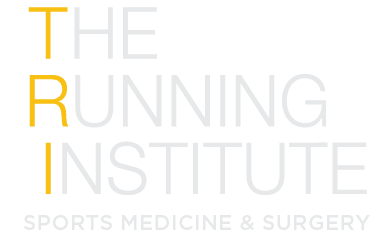The Risks of Steroid Injections and the use of EPAT, Amniotic injections, and MLS Class IV Laser as Alternative Treatment
Steroid injections may worsen joint damage
Steroid injections are commonly used to relieve joint pain by reducing inflammation for patients with knee and hip osteoarthritis. However, new findings make the case that this treatment may not be as safe as doctors thought.
A study done by Kompel and colleagues shows that steroid injections may even speed up the risks of joint damage. Data from 459 patients who received the intra-articular corticosteroid injections for osteoarthritis reveals that the patients exhibited accelerated osteoarthritis, subchondral insufficiency fracture, complications of osteonecrosis, and rapid joint destruction, including bone loss.
Furthermore, as there is no standardized way to identify patients who are more prone to the negative effects of the treatment, patients should be warned about the potential risks that comes with the treatment. The researchers thus stress the importance of getting informed consent.
While the accompanying editorial by Dr. Richard Kijowski notes the limitations of the study (small number of patients, lack of standardized methods), the study nevertheless raises questions of how safe are steroid injections and whether they are suitable for everyone.
The TRI-Chicago Way:
EPAT, Amniotic injections, and MLS Class IV Laser
Given the possibility that steroid treatments may speed up joint damage, other safer alternative treatments that are equally effective are indeed welcome. We, at The Running Institute, would like to share that.
We have been using EPAT (Extracorporeal Pulse Activation Treatment) with Amniotic injections for osteoarthritis (OA) with quite excellent success for patients in chronic pain.
Our main consideration for the use of EPAT is that we treat where the pain is stemming from, usually the bone beneath the cartilage. Cartilage does not have nerve endings, but the bone surface that supports it does. If we treat the bone, the pain tends to resolve. Then with the use of the Amniotic injections, the stem cell activation, the immediate down-regulation of inflammation, and the Hyaluronic Acid – all these improve the fluidity of the joint.
In very severe cases, the use of a subchondral bone support through surgery may be warranted. Usually, this can be performed under fluoroscopic guidance with minimally invasive techniques. There is a higher risk with the procedure and immobilization, but the outcomes have also been quite successful -- with patients returning to sport and activities at full capacity. Long term studies performed at several institutions exhibited similar results.
EPAT® (Extracorporeal Pulse Activation Treatment
Treatment Protocols
At The Running Institute we have specific treatment protocols to address OA.
EPAT + Amniotic injections is the protocol we developed as an alternative treatment. We have had excellent outcomes, with return-to-sport success of 95% upwards.
We extensively use the following treatment protocols:
EPAT is more for bone and chronic conditions of soft tissue injuries.
Amniotic injections are for stem cell activation, to improve the fluidity of the joint.
Laser therapy are more for early onset pain, inflammation, and nerve-based conditions.
EPAT, Amniotic injections, and laser therapy – these treatment protocols can be done independently, with variations depending on a case by case basis. For example, we use a combination of EPAT and Amniotic injections for cases of tears or severe pain.
For cases with acute inflammation and pain stemming from OA, we use a safer alternative, the MLS Class IV Laser Therapy. It helps heal the affected area without the atrophy effects of cortisone.
The pain levels are reduced in 3-4 weeks, usually after 6 – 8 sessions of treatment. These cases are usually with patients who are in the process of training for an event and cannot commit to other therapeutic options. Some patients are aware of the negative effects of cortisone and opt for laser instead. Some have needle phobia and want an alternative therapy.
The typical treatment sequence goes:
1 weekly EPAT for 4 weeks.
The Amniotic injection is to follow the 2nd EPAT session.
If the patient has severe pain in the joint, we immobilize for 2 weeks to allow the amniotic injection to set.
Physical therapy for a range of motion, stability, and strength are to follow usually after 2 weeks post 4th EPAT session.
If you are interested in learning more about this alternative treatment to steroid/cortisone injections, you can get help and information by sending us a message. You can also request an appointment by calling (866) 696-7988. We’d love to hear from you!
MLS® Class IV Laser Therapy



